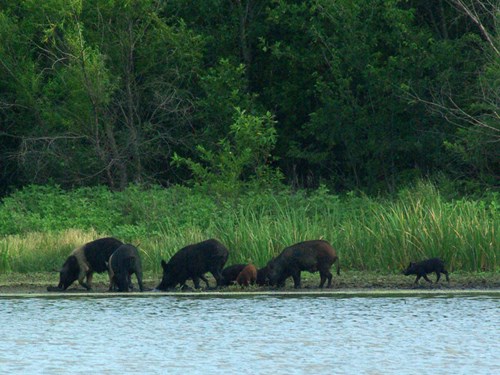Diet and Feeding Habits

Photo: dfwurbanwildlife.com
Feeding Habits
The feeding habits of wild hogs are one of the main characteristics that makes them such a problem in the U.S. If food is not readily available above the ground, wild hogs will root up and overturn soil (sometimes several feet deep) to access underground roots, tubers, grubs, seeds, crustaceans, or other food items. The wild hog's diet is comprised of about 90% plant matter and 10% animal matter. This animal matter can consist of reptiles, amphibians, fawns, rodents, worms, insects, or bird eggs.
Concerns for Native Flora and Fauna
During the fall, wild hog diets can overlap white-tailed deer diets by up to 46%, and put undue pressure on almost every other native species of plant and animal. Wild hogs consume 3-5% of their total body weight daily, which can be very detrimental to all wildlife communities. Research has also shown a reduction in desirable plant species in areas heavily pressured by wild hog feeding. Seedling regeneration (natural or commercial) is also diminished in places where wild hogs are prevalent.









